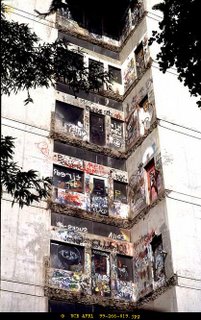Purple Gold

I have been thinking about program / site and here is what I have come up with (i hope it isn't jumping the gun):
The entire North American continent was “found” by Europeans who were seeking gold. When gold was not found on coastal settlements, many settlers continued to search for it inland. The promise of gold in America was not fulfilled until John A. Sutter was building a sawmill in Coloma, California. What was first considered “Sutter’s folly” grew into a full-scale national mania of gold seekers. Upon arriving in California, the miners first used simple techniques of mining gold, such as panning. Greed created more efficient technologies of extraction—namely using mercury to increase the amount of gold recovered. Ten to thirty percent of the mercury used was lost, entering the water supply and severely polluting the land to this day. The old mining sites, which litter the Sierra Nevada Mountains, are the physical manifestation of the American dream.
In 1998, a New Zealand Earth Scientist Christopher Anderson discovered that by treating the soil of these sites gold could be made soluable and then could be absorbed by plants. Proposing a model of farming, both gold and the contaminates could be picked up by the leaves of the agricultural plants, such as corn and canola. The plants, whose leaves turned purple from the presence of gold (gold is purple when it is in nano particles), are harvested not for food, but for gold they contain—yielding up to 14 ounces per acre. The process is called phyto-remediation. Since the gold is in nano-particulate form—a difficult state to reproduce artificially--it has direct applicability to the technology industry.
In the context of the American landscape, this represents a new attitude towards the environment. Sustainability is [re]considered not as self-satisfied building technologies (more efficient mechanical systems and increased energy efficiency) but as the revelation of what has not been sustainable, and how natural processes can fundamentally shift our attitudes.
I am proposing a new “gold mine” typology in the hills of the Sierra Nevadas. Taking the form of a resort, ecotourism and agritourism use architecture as a vehicle for remediating our relationship with the environment. Both exposing the scars of the past as well as creating better potentials for the future, the a new attitude towards the landscape and American’s role within it is revealed. Building is no longer object, but is embedded within the processes of reconciliation. The processes of the building are not discreet from the landscape; they are inextricably tied together to introduce a new way of experiencing our [un]natural landscape.



